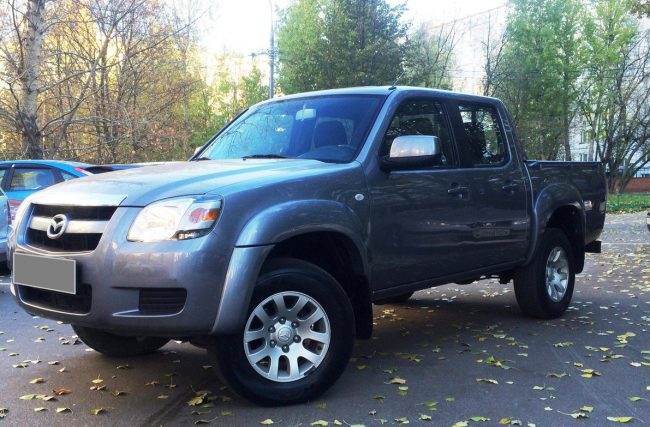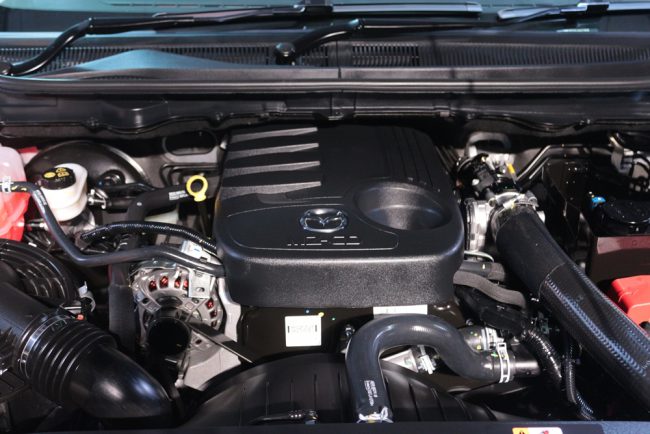
Mazda BT 50 engines
Content
The car of the Japanese Mazda Motor Corporation - Mazda BT 50 has been produced since 2006 in South Africa and Taiwan. In Japan, this car was never produced or even sold. The pickup truck was created on the basis of the Ford Ranger and was equipped with gasoline or diesel engines of various capacities. In 2010, the car was completely updated. Its base was the Ford Ranger T6. There were some cosmetic changes in 2011 and 2015, but the engines and running gear remained largely unchanged.

Mazda BT 50 engines
| Mark | fuel type | Power (hp) | engine volume (l.) | |
|---|---|---|---|---|
| P4 Duratorq TDCi | DT | 143 | 2.5 | First generation |
| P4 Duratorq TDCi | DT | 156 | 3.0 | First generation |
| P4 Duratec | Petrol | 166 | 2.5 | The second generation |
| P4 Duratorq TDCi | DT | 150 | 2.2 | The second generation |
| P5 Duratorq TDCi | DT | 200 | 3.2 | The second generation |
Until 2011, BT-50s were equipped with 143 and 156 hp diesel engines. Subsequently, units with increased power were added to the engine line and a gasoline copy was added.
First generation engines
All first-generation Mazda BT 50 vehicles were powered by 16-valve turbo diesel engines of the Duratorq TDCi family. The engines have low vibration and noise levels thanks to the double-walled cast iron cylinder block and additional jacket.
Despite the variety of trim levels, most often there are cars with 143 hp engines. These are old proven horses, long out of production, nevertheless, they are still quite reliable. When buying a used car, you can safely trust this engine. Despite the relatively low power of the car, it moves confidently on the highway and off-road.
P4 Duratorq TDCi engine - 156 hp distinguished by its economy. With this engine, installed on a full analogue of the BT-50 pickup truck - Ford Ranger, Norwegian motorists set a world record for the maximum distance traveled on one tank of fuel - 1616 km. Fuel consumption was less than 5 liters per 100 kilometers at an average speed of 60 km/h. This is 23% less than passport indicators. In real life, fuel consumption with this engine fluctuates around 12-13 liters per hundred kilometers.
Features of operation
According to BT-50 owners, the service life of Duratorq TDCi engines is approximately 300 thousand kilometers, subject to full maintenance. During operation, it should be borne in mind that the engine is quite capricious in relation to the quality of the fuel, which requires the use of high-quality original fuel filters. The same applies to oil filters.
Also, engines of this series require mandatory warm-up after starting. After a long trip, the unit should cool down smoothly by idling. This can be easily achieved by installing a turbo timer that prevents the engine from stopping prematurely. It should only be taken into account that by installing a turbo timer, you may lose the right to car warranty service.
Quite often, engines of this type experience a timing chain jump, which entails an expensive overhaul of the power unit. This can be avoided by punctually observing the terms of routine maintenance, which include replacing:
- engine oil;
- filters;
- valve train chain
- and more
Often, a chain jump occurs while the vehicle is being towed while trying to start the engine while on the move. It is absolutely impossible to do this.
Second generation car engines
Among the diesel engines with which the Mazda BT-50 is equipped, the 166 hp Duratec gasoline engine, which is produced at the Ford plant in Valencia, stands out. The engines are quite reliable, the manufacturer claims a resource of 350 thousand kilometers, although it can be more if timely and high-quality maintenance is observed.
The main disadvantage of the Duratec 2.5 engine is considered to be high oil consumption. Manufacturers partially tried to solve this problem by turbocharging the engine, but the resource was reduced by more than half. The Duratec engine series was produced for no more than 15 years and is now discontinued, which indicates its recognition as not entirely successful, therefore it was used mainly in Asia, Africa and South America.

Diesel turbo engines Duratorq 3.2 and 2.5 installed on the Mazda BT 50 are somewhat improved and more powerful in comparison with their predecessors, but they also have the same disadvantages. Thanks to the increased volume of the combustion chambers - 3.2 liters, it was possible to bring the power up to 200 horsepower, which naturally led to an increase in fuel and engine oil consumption.
Also, the Duratorq 3.2 engine has increased the number of cylinders to 5 and valves to 20. This significantly reduced vibration and engine noise. The fuel system has direct injection. Engine power peaks at 3000 rpm. There is no turbo boost in the 2.5-liter engine version.
Choosing a car
When choosing a car, pay attention not only to engine power, but also to its condition, mileage (if the car is not new). When buying a car, check:
- fuel consumption;
- engine oil consumption;
- compression in cylinders;
- smoke of exhaust gases;
- vibration and noise in different modes;
- if there are any oil leaks on the engine housing;
- tightness of the cylinder block.
Checking an engine completely in a short time is not easy. It is good if the seller agrees to test the car in different conditions for some time. After that, you can talk about the price. You also need to look in the service book and check the frequency of vehicle maintenance.


Watch this video on YouTube
Despite the fact that the Mazda BT 50 made for sale in the CIS is modernized and can be used at low temperatures, in the Northern regions, where in winter the temperature drops below -30 ° C, it is impractical to use a diesel unit.
Also, if you usually use a car in urban conditions, it makes no sense to purchase a pickup truck complete with a powerful engine, overpaying for unnecessary horsepower.
Choosing a car is not an easy decision. This may need to be done in the presence of a qualified technician.

